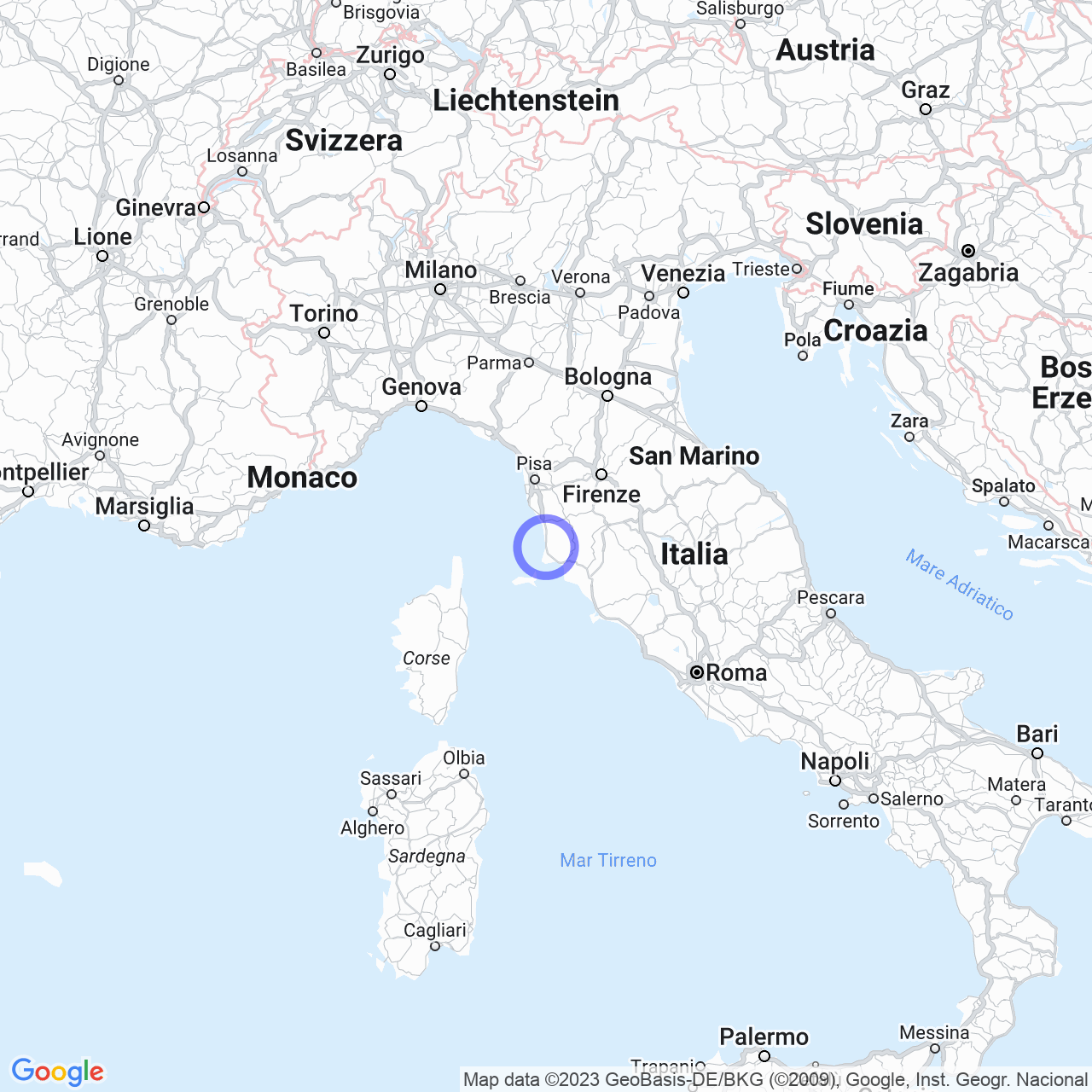San Carlo
A Hilly Location with a Favorable Climate
San Carlo is a hamlet located in the beautiful hills of the province of Livorno, in Tuscany, Italy. The settlement sits at an elevation of 174 meters above sea level and is approximately 5 km away from San Vincenzo. The area benefits from a favorable climate thanks to its sheltered location from the Ligurian Sea and its surrounding rich Mediterranean vegetation. Numerous plant species grow here, including oak trees such as Quercus pubescens, Quercus ilex, Quercus cerris, Quercus suber, Arbutus unedo, as well as boxwood and olive trees.
In the immediate vicinity of the village, there is the Monte Calvi, the highest point of the province of Livorno and the source of numerous wild orchids. This area is famous for its local wine and olive oil production.
History
San Carlo and its territory have ancient origins, as shown by human presence recorded since the Paleolithic period.
With the Lombard invasions of Italy, the Biserno Castle was built on the hill, which later came under the control of the Gherardesca counts. In 1304, the castle was partially destroyed due to internal conflicts within the Pisan family of the Gherardesca. The Tower of San Vincenzo was built by the Republic of Pisa, giving rise to the new community of San Vincenzo, as well as a customs office and a loading pier.
With the abandonment of the Rocca di Biserno, the area no longer had permanent settlements, only occasional ones. In the fifteenth century, the hill territories of the hamlet and the Tower of San Vincenzo passed under the control of the Florentines and the administration of the municipality of Campiglia Marittima.
In 1922, the Belgian company Solvay Group was established in San Carlo, exploiting the natural limestone deposits to supply the industrial plant of Rosignano Solvay. This favored the construction of homes and apartments for workers and created a local economy based on mining, giving it a modern appearance.
However, after 1950, the change in mining techniques led to a decrease in quarry workers, leaving the inhabitants of the village of San Carlo.

Touristic and Agricultural Development
In recent decades, San Carlo has seen the development of a tourist vocation through the promotion of its unique landscape and nature. The hilly area offers many opportunities for leisure and outdoor sports, and recreational equipment can be rented on site.
Furthermore, thanks to the rediscovery of agriculture, there has been development in this sector. The territory of San Carlo offers high-quality agriculture with local crops such as cultivated olive trees, which produce superior quality olive oil. Local winemaking produces a wine known throughout Tuscany.
Conclusions
San Carlo is a hamlet that has an ancient history, but at the same time, it is a location that can offer the experience of a holiday far from the hectic life of the city. Here one can spend days relaxing in nature, surrounded by vineyards and olive groves, and enjoying local cuisine with typical dishes such as wild boar stew and rosemary focaccia. We are certain that a visit to San Carlo will leave you with lasting memories, and you will definitely want to come back.
